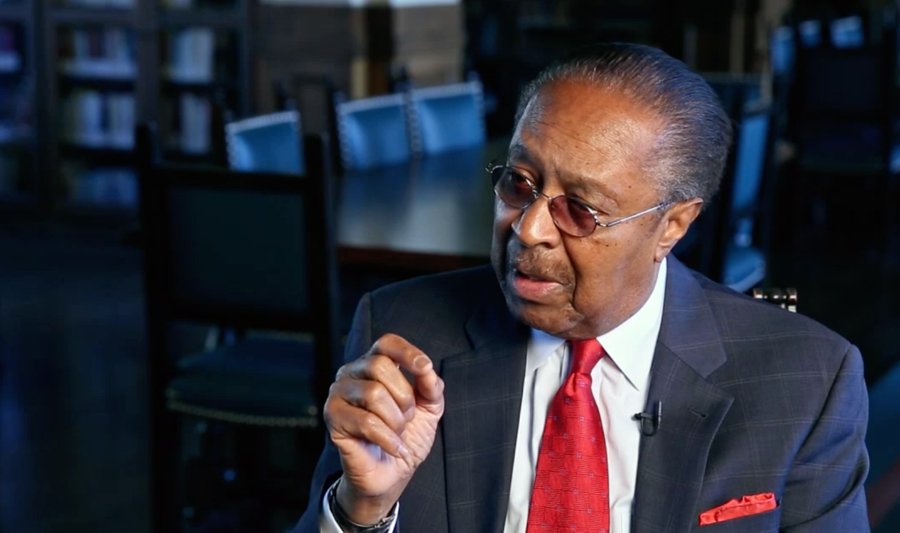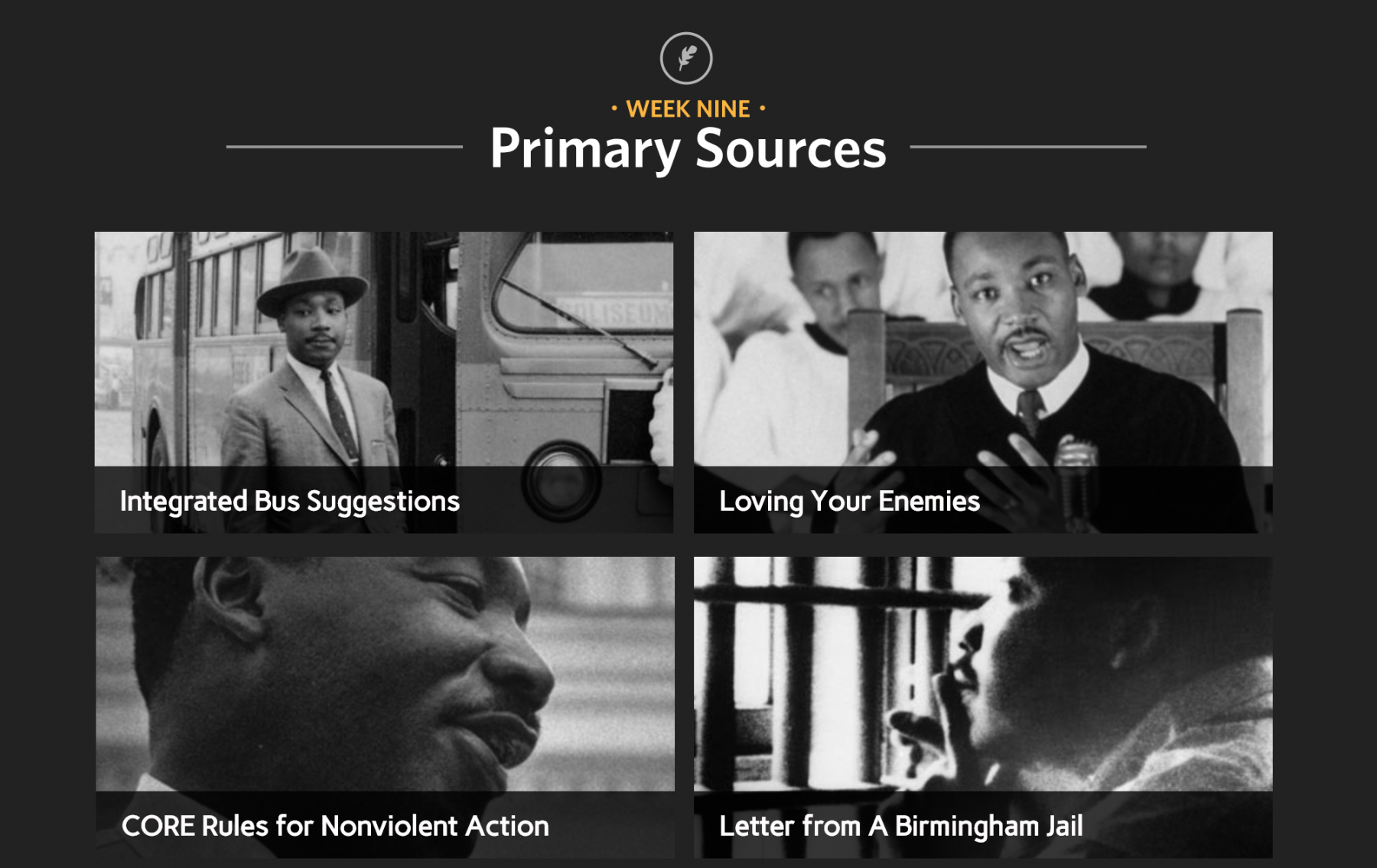Case Study: From Slavery to Obama
Transforming and Preserving a Flagship Critical Diversity Studies Course

When USF Distinguished Visiting Professor Dr. Clarence Jones developed and taught his Critical Diversity Studies course, From Slavery to Obama, it was initially offered to a small group of undergraduates who half-filled the stadium-seating in an old lecture hall. As a former speechwriter and lawyer for Dr. Martin Luther King, Jr., Dr. Jones possesses an invaluable first-person perspective on the Civil Rights Movement, and by extension, the history of the black experience in America. In the course, he traces a line from slavery to the present in America, critically examining the historical consequences of slavery. Dr. Jones is not just a history professor, he is a primary source for this history, as well as an activist, a scholar, and an intellectual who is perhaps uniquely suited to tell this history and to contextualize the Black Lives Matter movement.
Instructional Challenge
Shortly after launching the course, it became clear that the material and the instructor were extraordinarily compelling and of real historical importance. USF’s Critical Diversity Studies Department moved to format the course for an online audience. In 2016, the course was published online, extending its reach beyond one classroom at USF. To date, it has been distributed to educational networks such as the 26 Historically Black Colleges and Universities as well as the San Francisco Unified School District.
Building the Online Course
The online version of From Slavery to Obama required the work and coordination of many–USF faculty and staff from across the university, and contractors, who worked together to generate, design and implement the course as a stand-alone website. The course is divided into fifteen discreetly focused, but consistently-designed modules. Each learning module contains three basic sections: guiding questions, stated learning outcomes, and assignments. In addition to readings and discussion questions, the assignment section includes a topical video interview with Dr. Jones.
Creating Video Lectures
The filmed interviews and lectures bring Dr. Jones to his audience with immediacy. They employ historical photos, music, and graphics in addition to the interview with Dr. Jones. He is impassioned and engaging as he frames the historical-political landscape of each unit and clarifies its relevance to his students, while raising critical questions. The videos are of particular value to online students who will never have the opportunity to be in a lecture hall with Dr. Jones. These videos of him enable students to see him, hear him, connect with him and trust that he is a credible authority on the subject matter. Dr. Jones possesses a clear facility for conveying history as relevant, accessible, and vital; watching his interview and lecture videos is engaging and informative.
Embedding Interactivity for Deeper Learning
Further, visually appealing interactive learning objects were designed to engage students with the primary source material. When clicking on different images, different primary sources will appear, such as Letter From a Birmingham Jail, or Dr. King’s personal notes, or the US Constitution for example.
A Team Effort
The Instructional Design Team at USF supported and coordinated many people who worked to produce this unique online course. It was a tremendous team effort where we managed versioning of the site and coordinated with the media developer and content experts as they managed fact-checking, copy-editing, and copyright review. In addition, the ID team conducted a major effort to implement accessibility into the design of the course, ensuring that students with diverse abilities would be able to participate equally. For this work, we reviewed and updated every page of the site and created and edited any and all documents, images and videos, to comply with accessibility guidelines (WCAG 2.0).
Not only is From Slavery to Obama informative, it is well-organized, polished, visually impactful, and relevant to USF’s mission of promoting social justice. For all of us on the Instructional Design team at USF, we were thrilled to use our skills to bring this historic course online to a broader audience.
